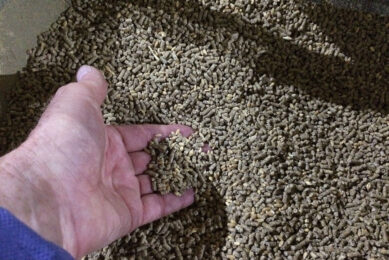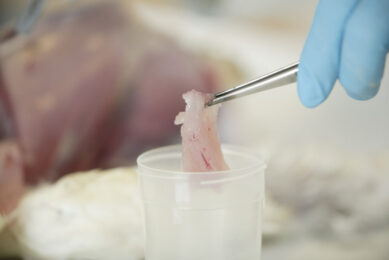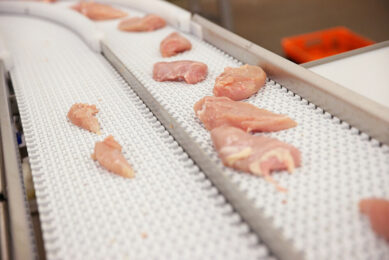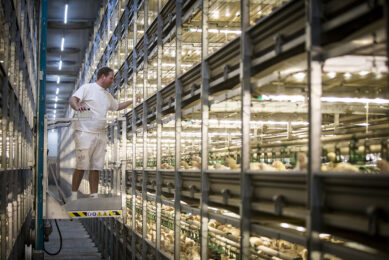EU’s chicken integration champions in Romania
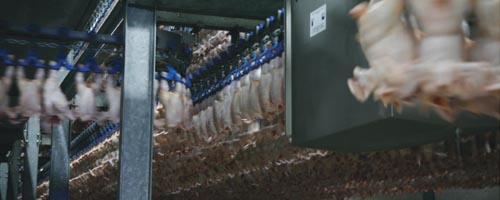
Romania’s poultry meat sector has had to struggle through difficult years of avian influenza and Newcastle Disease outbreaks, as well as dramatic drops in poultry prices mid-decade. However, a tremendous recovery is now being made. Domestic market sales increased by at least 30% this year, and expansion is evident among leading processors.
Author: Norman Dunn, FoodFarm Communications, Germany
The Romanian chicken meat and egg sector may not have invented vertical integration, but the major producers in the country have taken the system much further than many. This is where the top four poultry meat processors all have their own parent breeding flocks, hatcheries, feed mills, processing plants and cold stores. Many of these processors also have their own fleets of freezer trucks on the road distributing the produce, as well as their own chains of retail outlets selling their goods to consumers.
Such control is good when there is strong demand for farm-to-fork hygiene supervision and complete traceability – standards that are increasingly important in Romania as it shakes-off the low prices and poor demand caused by the avian influenza that hit in 2004-2006.
Additionally, it’s also economically attractive to have your own stores as alternative retail markets when the top supermarket chains start to squeeze production and processing margins in chicken meat, as they are now doing in Romania. It certainly appears that Romanians are strongly backing their own chicken meat industry. First returns for 2009 from the Romanian Association of Poultry Breeders (UCPR) report sales increases of over 30% for the first five months of the year compared with the same period of 2008.
In fact, one of the most innovative processors, Ave Impex from Satu Mare in northwest Transylvania, says its turnover in the same period has soared by 52%. The recession has a lot to do with consumers choosing the most cost-efficient meat, according to the experts World Poultry spoke with.
Though, there’s a growing feeling, too, that the healthy eating wave is definitely breaking on Romania’s shores. Out of all meats sold in Romania, chicken meat is the only one to have increased sales in 2009, as yet. Dairy product sales, for example, have slumped by more than 20%. Own-production of chicken meat has been slowly increasing between 2006 (266,000 t) and 2008 (270,000 t). Even from January – April this year deliveries topped 110,000 t, according to UCPR. Total consumption in 2008, with imports mainly from Brazil, but also from countries including Poland, the Netherlands and Hungary, was over 380,000 t (more than double the figure for 2000). Market watchers reckon 400,000 t will be a reasonable estimate for total consumption by the end of 2009. This includes around 15% imports and would mean per capita consumption for this 22.4 million population country that is the seventh-largest in the EU-27 reaching 17.8 kg, which is a 25% increase over the 2007 figure.
Currently, self-sufficiency in Romanian chicken meat production is around 70%.
Main players in Romania
Transavia is an integrator that claims it captured 12% of the home market for its chicken meat in 2007, and 15% in 2008. Turnover is put at €95 million. Under General Manager Ioan Popa, this private concern claims an annual production of 30,000 t of chicken meat – although its 2004-built slaughterhouse and processing plant has a capacity of 50,000 t per year. Parent flocks produce over 14 million eggs annually with 12 million day-old chicks from company hatcheries.
Transavia has established a maximum biosecurity chain including its own 250 t per day feed mill, claimed to have the only purpose- built feed sterilisation system in the country. After processing there’s a fleet of over 100 cool-chain vehicles distributing nationwide.
Tight budgets and health awareness boosts broiler sales In an interview with World Poultry, Marius Zaviceanu, Export Manager with Ave Impex, outlines current developments in the Romanian sector with increased sales for chicken and bright prospects for more exports. “Sales of chicken meat in Romania are buoyant at the moment [Sept, 2009] after a very good start to the year with top processors experiencing an over 30% increase for the first five months compared with the same period of 2008. There is no doubt that Romanians are buying more chicken. They’re also turning increasingly to home-produced chicken meat,” says Zaviceanu. He goes on to say that the market is under great pressure because the country’s larger supermarket chains are targeting lower prices and leaving very little margin for producers and processors. “This year the financial recession has led to a lot of families reshuffling their household budgets and buying the cheaper meat, being chicken, which is also becoming more popular as consumers are are now more health-conscious,” he says. Integration is very typical of the broiler and egg production infrastructure in Romania. The top six producers in this sector are all integrators. After the revolution the infrastructure was already in place. Under the communists, production was designed as a continuous chain from hatchery and feed mills to selling point. Private businesses took over, but many of the biggest kept the former infrastructural chain and modernised it to suit the market economy. “In fact, in our country it has gone a little further. Many of our integrators have their own retail stores. One owns as many as 40 retail outlets selling only its meat and eggs. We in Ave Impex have 13 retail outlets that specialise in our products and nothing else. The concept seems to work very well, although, of course, these outlets can handle only a small percentage of output – I think about 10% in our case,” he says. “Should we increase sales through our own outlets on the home market? This is a question that management discusses often. When margins are acceptable on the open market I think it is probably more economical to have good contracts with the big retailers. On the other hand, when there’s huge pressure from other retailers to reduce prices – as at present – then having own outlets begins to look more attractive for a processor! Our aim in Romania is definitely to move more towards self-sufficiency in chicken meat, and this is around 70% in 2009. The increases in production since the avian influenza outbreaks and crash in the poultry market have been significant. This has had an effect on imports. For instance, our two main importers used to be Brazil and the US not so long ago. Now, very little poultry meat is coming in from the US and our exports are steadily increasing. Our main customers are Hungary and the UK. Additionally, we import chicken meat from Poland, the Netherlands, Hungary, and Brazil.” |
Agricola International Bacau, from the city of that name in north-eastern Romania, had an annual turnover of €84.11 million in 2008. This figure represents an income increase of 15% on the year.
This year, President and Owner Gheorghe Antochi expects sales of €108.5 million. As with most of the other leading chicken meat producers in the country, Agricola, which has 2,700 workers in its poultry section, also produces 110 million eggs per year.
Investments by this integrator since the 1990s have totalled €62 million in a new slaughter and processing plant, parent bird facilities, and feeding farms. The latest investment is a new feed mill in association with the French animal nutrition and health company Evialis.
Avicola Crevedia (Agroli Group), with chicken meat sales in 2008 estimated at 12,000 t and earning €28.3 million, plans even more investments. Currently, €5 million is being invested in upgrading the company’s slaughterhouse and startingoff four new broiler farms on greenfield sites. This, however, only forms a part of a €32 million investment plan for 14 more broiler farms with a total output of 2.1 million birds per feeding cycle. At present, output is 1.4 million birds per cycle with the company claiming 10% of the Romanian chicken meat market.
The Agroli Group also includes a division specialising on breeding and hatching, Avicola Tartasesti and the “Jackmoris” egg production company. Total 2008 turnover for the group, which has other interests in the food chain including the production of frozen vegetables, was €75 million, a figure representing a dramatic 48% increase on the previous year’s performance. This is yet another sign that Romanian consumers are waking up to the advantages of eating home-grown chicken and eggs.
Again, distribution is part of integration. The company is now planning its own take-away outlets selling eggs, ready-to-eat chickens and chicken portions, as well as fresh and frozen meat products. Of these “Crevedia Express” outlets, 10 are blueprinted for 2009 in Bucharest and surrounding towns. The company has also established national brands for both chilled and deep frozen products. Branded eggs are aimed at the premium market under the title “Cocolyso: Eggs to take home”. Yet another idea from Crevedia appearing just recently is “Ferma Natural” chicken, which is marketed as from environmentally-aware and welfare-based production systems.
Ave Impex is one of the great winners in the Romanian chicken meat revival with sales for the first five months of 2009 claimed to have increased by 56%, which equals 5,571 t of meat on the market. In 2008, sales were around 12,000 t, earning €21.4 million. The sales target for this year is 15,000 t, with rapidly expanding export trade to Britain and Hungary, amongst other countries, supporting this aim.
Infrastructure of this integrator includes three breeding farms with 17 Cobb parent flocks and two hatcheries with a capacity for 10 million chicks annually. There is a modern feed mill and a processing plant (HACCP and ISO certified) handling 4,000 birds per hour. The Ave Impex feeding farms total 40, turning out birds at 2-2.1 kg liveweight after a 38-day feeding cycle. The integration chain doesn’t stop there. Ave Impex runs a sizeable transport fleet as well as a chain of retail stores selling its chickens, chicken meat products and eggs




